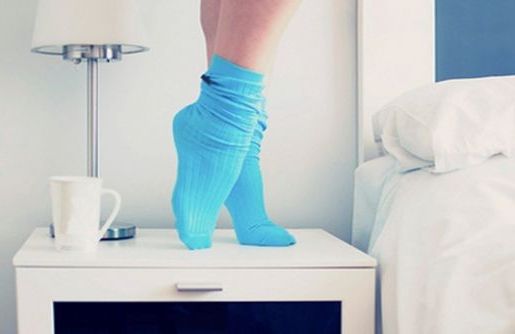Feet in Winter: problems and care
The very cold winter may promote the development or aggravate foot problems; hence the importance of a series of basic care, such as wearing a proper shoes, not too tight, and avoids moisture in the feet. A strong and healthy foot is essential for enjoying a good quality of life.
The foot also has many sensitive parts, especially the ankle joint that generates most of the movements and anatomically, the forefoot, where more overhead receives. It is not the direct cause, but the type of shoe itself is a risk factor aggravating ailments that most are predisposed to suffer.
Pain in toes, floor or heel pain, bunions or calluses appearance are some of the most common problems, which in winter dryness (feet, heels), excessive sweating and add more foot odor (favors the growth of fungi) or chafing. The poorly maintained nails can also cause problems. If case, should consult a doctor to confirm the cause of the problem and apply the most appropriate treatment. The first step in diagnosis is physical examination.
It is important to stress that we should fix it, before a foot problem, because it can affect other body areas. Thus, for example, by supporting the wrong foot, hip or spine, for example, also suffer. This is because the foot is attached to the other joints. In fact, sometimes the source of a problem in the foot is in other parts of the body.
The skin of the feet, due to their role, has special characteristics, notably the high production of keratin. This substance increases the thickness of the horny layer of the skin to a greater extent than in any other part of the body. Most of the skin lesions of the foot relate to excess keratin and often have their origin in wounds, bruises or abrasions.
Feet in winter: care
The feet have to take care in winter. Injuries and problems that may arise can be prevented, in most cases, with a proper daily hygiene, monitoring of incipient lesions and the use of quality footwear adapted to each situation.
Feet in Winter: Consequences use inappropriate footwear
The feet support our weight and adapt to different terrains so we move. The forefoot supports 43% of our weight and the back, 57%. If we got to the front heel of the foot supports almost 60% of weight, if more than 10 inches, most of the burden will fall on the tip. Seven out of ten people, according to medical data, have foot problems resulting from improper footwear.
What qualities must meet good shoes?
- Must be of the size corresponding to the size of the feet.
- Materials should be flexible, breathable, protective and insulating against cold and heat.
- The heel must be between 2 and 3 inches.
- The sole should be of non-slip material, leather or rubber.
- The design should be as ergonomic as possible, lined and seamless interior.
- Footwear is for personal use. Remember that you’re doing well a person does not have to be good for another.
